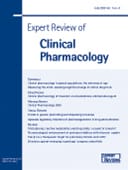
“GPR3 and GPR6 are members of a family of constitutively active, Gs protein-coupled receptors. Previously, it has been reported that GPR3 is involved in Alzheimer’s disease whereas GPR6 plays potential roles in Parkinson’s disease.
GPR3 and GPR6 are considered orphan receptors because there are no confirmed endogenous agonists for them. However, GPR3 and GPR6 are phylogenetically related to the cannabinoid receptors.
In this study, the activities of endocannabinoids and phytocannabinoids were tested on GPR3 and GPR6 using a β-arrestin2 recruitment assay. Among the variety of cannabinoids tested, cannabidiol (CBD), the major non-psychoactive component of marijuana, significantly reduced β-arrestin2 recruitment to both GPR3 and GPR6. In addition, the inhibitory effects of CBD on β-arrestin2 recruitment were concentration-dependent for both GPR3 and GPR6, with a higher potency for GPR6.
These data show that CBD acts as an inverse agonist at both GPR3 and GPR6 receptors. These results demonstrate for the first time that both GPR3 and GPR6 are novel molecular targets for CBD.
Our discovery that CBD acts as a novel inverse agonist on both GPR3 and GPR6 indicates that some of the potential therapeutic effects of CBD (e.g. treatment of Alzheimer’s disease and Parkinson’s disease) may be mediated through these important receptors.”
https://www.ncbi.nlm.nih.gov/pubmed/28571738
http://www.sciencedirect.com/science/article/pii/S0006291X17310744








